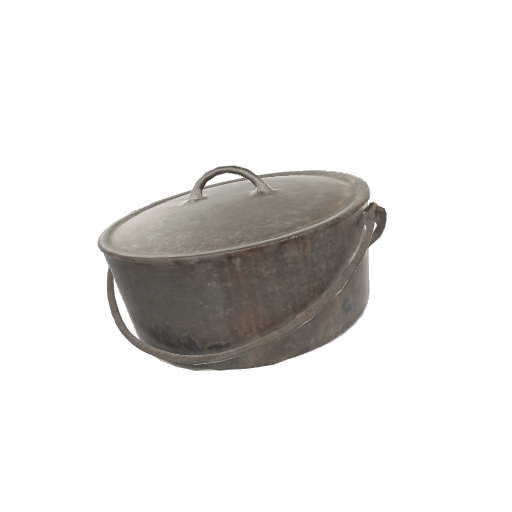Cauldron
This type of cauldron is used to heat water and cook food. It is made of cast iron, an alloy of iron and carbon from coal, which makes it very heavy, strong, and durable.
At home, food is usually cooked in the hearth, the section of the fireplace where the fire is lit. The handle allows one to hang it from the fireplace crane. It can also be placed on a stand over the hot coals. The larger cauldrons are used for various purposes, such as soapmaking.
From the 17th century onward, due to the cold winters, many households are equipped with iron stoves imported from Europe. Later, in the 18th century, brick stoves are more common. Before 1730, cast-iron utensils are rare in the colony, but the establishment of the Forges du Saint-Maurice and its prolific production makes it possible to produce stoves and other cast-iron objects locally.
References
Date: Unknown
Origin: North America
Owner: Site historique de la maison Lamontagne.
Sources:
Bergeron, Y. (1991). Cuire et conserver les aliments: La révolution technologique au XIXe siècle [Cooking and preserving foodstuffs: The technological revolution of the 19th century]. Cap-aux-Diamants, 24. https://id.erudit.org/iderudit/7753ac
Miquelon, D. (2006, February 7). Les forges du Saint-Maurice. In The Canadian Encyclopedia. Retrieved April 21, 2022, from https://www.thecanadianencyclopedia.ca/fr/article/forges-saint-maurice-les
Samson, R. (1998). Les Forges du Saint-Maurice [The forges of the Saint-Maurice region]. Presses de l’Université Laval.
Séguin, R.-L. (1972). Les ustensiles en Nouvelle-France [Utensils in New France]. Leméac.
Vallières, M. (2012). Des mines et des hommes: histoire de l’industrie minérale québécoise des origines à aujourd’hui [Of mines and men: the history of Quebec’s mining industry from its beginning to our day]. Gouvernement du Québec. https://gq.mines.gouv.qc.ca/documents/examine/GT201301/GT201301.pdf
